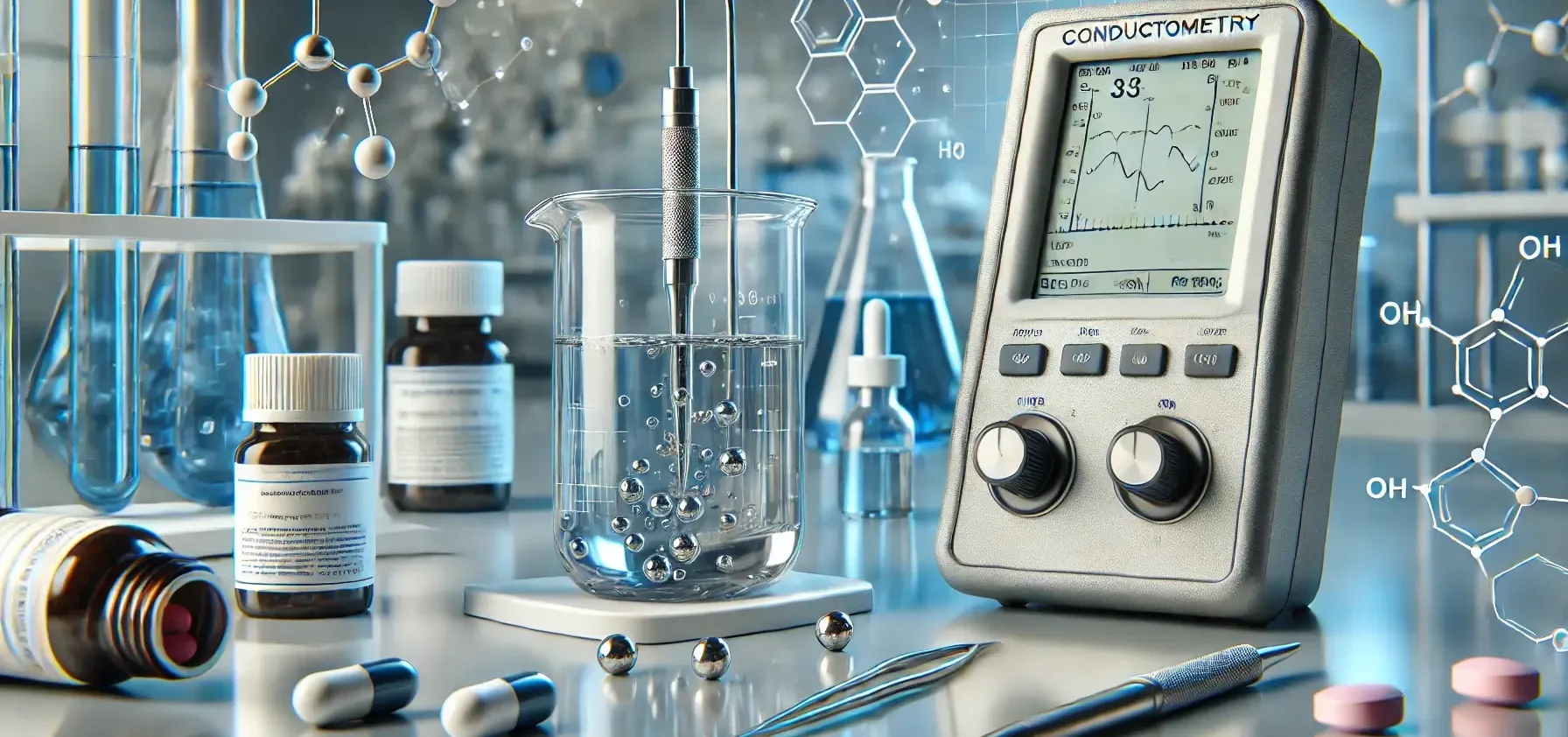- Introduction to Conductometry in Pharmaceutical Analysis is a significant analytical technique used in various fields, including pharmaceutical analysis, to measure the electrical conductivity of a solution.
- This measurement is indicative of the presence and concentration of ions in the solution, which is essential for understanding many aspects of a solution’s composition and properties.
- Here’s an introduction to conductometry, focusing on its application in pharmaceutical analysis:
Fundamentals of Conductometry in Pharmaceutical Analysis:
-
Electrical Conductivity:
- It’s the ability of a substance to conduct electric current, which in solutions, is due to the movement of ions.
- Conductivity is inversely related to resistance.
-
Conductance (G):
- The ease with which the electric current flows.
- It’s the reciprocal of resistance.
-
Cell Constant (k):
- It’s specific to the conductometric cell used and is a factor of the electrode’s size and distance apart.
Measurement of Conductometry in Pharmaceutical Analysis:
-
Conductometric Cell:
- A typical setup involves a pair of electrodes immersed in the solution whose conductivity is to be measured.
-
AC Current:
- Alternating current is used to prevent electrolysis at the electrodes, which could affect the measurements.
Advantages in Pharmaceutical Analysis
- Sensitivity: Conductometry is sensitive to changes in ionic concentration, making it useful for detecting even small amounts of ionic impurities.
- Non-Destructive: It doesn’t alter the sample, allowing for further analysis if needed.
- Rapid and Easy: Conductometric measurements are typically quick and don’t require complex procedures.
Advertisements
Applications of Conductometry
-
Pharmaceutical Analysis
- Determines the concentration of active ingredients, impurities, and degradation products in drug formulations.
- Useful for monitoring solid dosage dissolution and analyzing electrolytes in intravenous solutions.
-
Water Quality Monitoring
- Measures total dissolved solids (TDS), water hardness, salinity, and concentrations of anions and cations in water samples.
-
Environmental Analysis
- Assesses pollutant concentrations (e.g., heavy metals, organic compounds) in air, water, and soil.
- Used to monitor chemical reactions in industrial processes.

